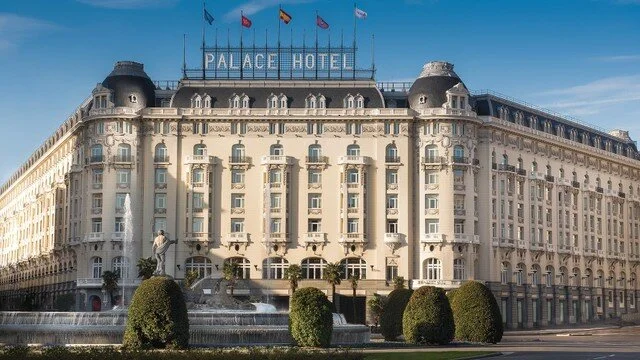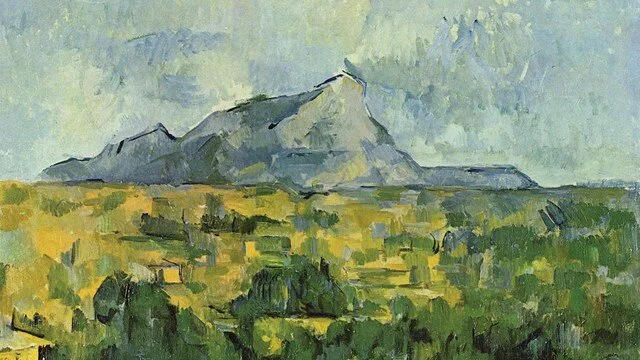3 Artists and the Places that Made Them
3 Artists and the Places That Made Them
Take a Tour Through Cezanne’s Southern France, Dali’s Madrid, and Pollock’s Hamptons
Art lovers around the world have long been entranced by the icons Paul Cézanne, Salvadore Dalí, and Jackson Pollock. To fully understand and appreciate these masters, it helps to visit the places that nurtured and continue to display their talents. Each locale is a thrill to visit in its own right; add in these stops and you’ll come away with a newfound artistic education covering some of the art world’s biggest names.
Salvador Dalí’s Madrid
While Salvador Dalí was born in 1904 near the French border in Catalonia and spent his formative years there, the titan of Spanish surrealism casts an imposing shadow over Madrid.
In 1922, Dalí moved into the city’s Residencia de Estudiantes (Students’ Residence) and studied at the Real Academia de Bellas Artes de San Fernando. Today, both facilities are open to visitors looking to delve deeper into the artist’s background; the Residencia de Estudiantes, one of the oldest cultural centers in Madrid, hosts myriad conferences, panel discussions, concerts, poetry readings, and exhibitions.
The Museo Nacional Centro de Arte Reina Sofía allows Dalí fans to mix with Picasso lovers; the museum holds world-class collections from Spain’s two greatest 20th-century masters.
In 1985, the Madrid City Council decided to dedicate a public space to Dalí and commissioned the artist to create a work for the space. The Plaza de Salvador Dalí is dominated by the only urban monument in the world designed by the artist, a hulking granite dolmen (a single-chamber megalithic tomb). Within the 43-foot structure, in which an oval-shaped natural rock was placed on three carved granite pillars, resides a bronze sculpture of an abstract, masculine figure standing on a pedestal of polished black granite.
Visitors looking to tap into Dalí’s mind can stop by the Westin Palace Madrid, a historic property that was commissioned by King Alfonso XIII in 1912. Back when it was known as the Hotel Palace, Dalí enjoyed jazz nights with friends and preferred to stay in the suites overlooking the iconic Fuente de Neptuno (Neptune Fountain); the artist was notorious for making elaborate demands of the staff. Today, visitors to the hotel, which sits in the shadow of one of the world’s most famous art museums, the Museo del Prado, can enjoy a cocktail in the 1912 Museo Bar. (A case next to the bar holds a piece of hotel stationery bearing a note and poem penned by Federico García Lorca, and embellished with doodles by Dalí.)
Salvador DalÍ, reportedly enjoyed jazz nights while staying at what is now the Westin Palace Madrid. Salvador DalÍ, reportedly enjoyed jazz nights while staying at what is now the Westin Palace Madrid.
Paul Cézanne’s Southern France
Perhaps no artist is more associated with the South of France than Paul Cézanne. The postimpressionist master, who spent much of his life in his native Aix-en-Provence, was one of the most influential 19th-century painters. (Both Matisse and Picasso reputedly said he was “the father of us all.”)
Cézanne was passionate about Aix-en-Provence—he was famously quoted as saying: “When you’re born there, it’s hopeless, nothing else is good enough”—and present-day visitors can walk in Cézanne’s footsteps. A well-marked pedestrian route allows visitors to discover the landmarks of Cézanne’s early years, including his childhood homes and schools, the addresses of his family and acquaintances, and other notable spots that shaped him.
To see one of the key places in Cézanne’s life, take a guided tour of his family’s manor house, the Bastide du Jas de Bouffan, where the artist established an atelier in the attic and often painted in the garden, looking out to the Montagne Sainte-Victoire mountain ridge from different vantage points. For the last few years of his life, Cézanne painted in his studio in Les Lauves, around an hour from Aix, and after his death it became memorialized as Atelier Paul Cézanne. Visitors can peruse models, furniture, and equipment as the artist left them in his studio.
Cézanne devotees head to the east of Aix to explore the labyrinthian Bibémus quarries. In 1897, the artist rented a cabin there and produced works based on the deserted landscapes; paintings like “The Red Rock” went on to inspire the cubist style.
Active types can take a hike up Montagne Sainte-Victoire, known by some as “Cézanne’s mountain,” which was the subject of more than 60 works by the artist. After a two-hour jaunt up the mountain, which is recognizable for its white limestone cliffs, visitors enjoy gorgeous panoramic views of the region and out to the Mediterranean Sea.
Paul Cézanne, painted the Sainte-Victoire mountain ridge in southern France.
Jackson Pollock’s Hamptons
Some 60-plus years after his death, Jackson Pollock, the pre-eminent figure of abstract expressionism, continues to captivate. His wall-size drip-and-pour painting One: Number 31 has been bringing crowds to the $450 million expansion of New York’s Museum of Modern Art, and his large-format works entrance audiences around the world.
Pollock acolytes commonly make pilgrimages to the Hamptons on Long Island, home to the Pollock-Krasner House and Study Center, a National Historic Landmark open from May through October (guided tours by reservation only). The house, built in 1879, is typical of the area’s 19th-century farmers’ and fishermen’s homes.
Pollock—who lived there with his wife, artist Lee Krasner—converted a barn into a studio. There, without heat or artificial light, he perfected his distinctive “drip” technique of using paint, in which he laid the canvas on the floor and walked around it, applying paint from all sides. The energy in the studio is palpable, especially whenever visitors spot the floorboards, which still bear original drips from Pollock’s very own brushes, sticks, and basting syringes.
A visit to Pollock’s Hamptons comes full circle at Green River Cemetery. After Pollock was buried there in 1956 (Krasner was laid to rest by his side in 1984), the cemetery became famous as a final resting place for notable artists and writers, with numerous headstones that resemble works of art.
Jackson Pollock and Lee Krasner, bought their home, now a National Historic Landmark, with help from art patron Peggy Guggenheim.




